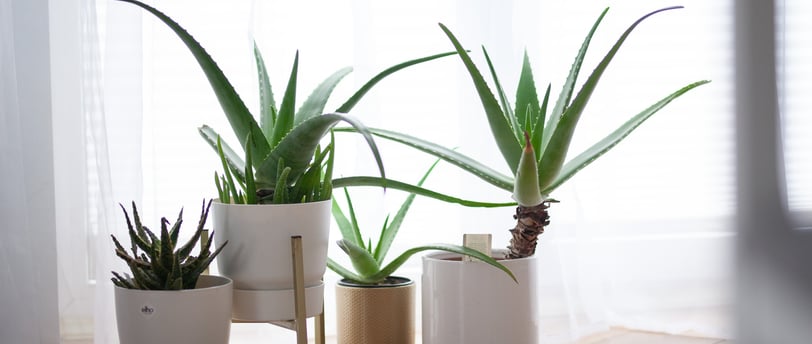What should it be called? Aloe or Alijošius?
aloe or alijošius
Dalia Šateikienė
1/31/20252 min read


Do you recognize it? Green, with thick, fleshy, pointed, serrated leaves, often growing in a rosette shape, loving the sun, requiring little water, and incredibly beneficial to our health. What is it?
In online discussion forums, I often see it referred to as "alijošius," while in books and articles, it is commonly called "alavijas." This naturally led me to wonder: are these two different plants, or are they actually the same?
After researching written sources, I found that the Latin name Aloe originates from the Arabic word alloeh, meaning "bitter" or "shiny." This reflects both the taste and appearance of the plant's sap. In Lithuanian, two main names are used—alavijas and alijošius. While these terms are often used interchangeably, they may have different linguistic origins. For instance, alavijas is likely a direct adaptation of the Latin Aloe into Lithuanian. Meanwhile, alijošius may have stemmed from the Russian name алоэ (aloe), which itself is linked to the Latin term. Both names are correct and widely used in the Lithuanian language.
Additionally, in Lithuanian folklore, alijošius has many other names that often reflect regional peculiarities or the plant's characteristics. In some parts of Lithuania, it is also called oželis or šimtametis. These names are influenced by local dialects or the plant’s properties. For example, šimtametis (meaning "centenarian") might be related to the plant's longevity or slow growth. Such folk names enrich the language and provide insights into how different communities perceive and appreciate this plant.
Aloe vera is an integral part of Lithuanian homes. It is often grown on windowsills not only for its medicinal properties but also as a decorative plant. Due to its ability to survive in arid conditions and its low maintenance requirements, aloe has become a popular household plant.
So, the words alavijas and alijošius are synonyms—both refer to the same plant. However, depending on the language and region, one term may be more commonly used than the other. For instance, I have noticed that alijošius is more frequently used in Lithuanian, while alavijas is preferred in English. There is no fundamental difference between them; they are simply different linguistic forms referring to the same plant species.
And what do you call this plant?